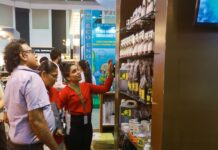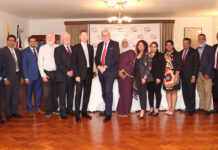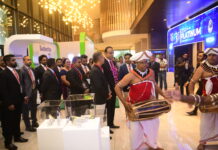Introduction
A super-holding company for managing State-Owned Enterprises (SOEs) has been identified as a globally successful model for SOE management. This model allows the government to adopt a more arms-length approach to SOEs’ operational decision-making, relieving it of the direct responsibility of overseeing all SOEs dispersed across various industries, and instead redirect its budget and energy elsewhere. The merits of this model have enabled countries such as Malaysia and Singapore, which employ similar holding company structures, to ensure impressive performances of their SOEs.
This article is the third of a three-part series where part one and two provide an in depth analysis of the case of Singapore’s and Malaysia’s SOE holding company models (Singapore’s Temasek Holdings and Malaysia’s Khazanah Nasional), and their role in enabling economic growth and development for the respective countries. Part three will provide learnings for Sri Lanka, which can be adopted for the country’s SOE reform process. This series of articles is a joint effort by the Ceylon Chamber of Commerce (CCC) and the Colombo Stock Exchange (CSE).
Part Three: Learnings for Sri Lanka
There are a multitude of reasons as to why the Temasek and Khazanah models were successful. One of the main reasons is that both Temasek and Khazanah are registered as companies under the Companies Act of the relevant countries, subjecting the holding companies to the same requirements as a private sector business.
Another parallel can be drawn from the economic crisis Sri Lanka is currently facing. It was noted that both Singapore and Malaysia faced a crisis period that enabled the formation of Temasek and revamping of Khazanah for reforms to take place. Singapore’s political and social environment during the late 1950s to the early 1970s during which it obtained independence from British rule, was a major factor in the development and governance of SOEs. The harsh economic conditions coupled with a challenging political environment in Singapore during this period played a significant role in nurturing good political governance in Singapore, which was in turn transposed to the SOEs.
In Malaysia, though Khazanah was established in 1993, it did not play an active role until the Asian financial crisis. Following this crisis, the inefficiencies and suboptimal performance of SOEs were deeply felt by the Malaysian economy. This led to the major transformation of Khazanah along with major corporate restructuring and institutional reforms to SOEs.
One of the main the reasons for the success of Singapore’s Temasek model is based on its impressive track record of corporate governance. The World Bank on many occasions has recognised Singapore as having the best regulatory and economic environment in the world for doing business. Other institutions such as Transparency International and the Asian Corporate Governance Association too have repeatedly ranked Singapore as having the best corporate governance and lowest levels of corruption in Asia.
Singapore’s leading rankings suggest that it may be a poster child for the Western model for good corporate governance. However, if one drills down, going beyond the rankings, it will become apparent that Singapore’s corporate governance model is distinctly different from Western principles of corporate governance.
A majority of Singapore’s largest listed companies are SOEs, which account for almost 37% of the capitalisation of the Singapore Exchange Limited (SGX). Hence, the Singapore government is by far the most powerful shareholder. This is incongruent with Western principles of market-oriented and shareholder-centric models.
This a good learning for Sri Lanka that the government being the most powerful shareholder does not necessarily affect the performance rather strong corporate governance – something which Sri Lanka has tended to elude from – becomes a key factor for its success. Therefore, it provides a highly successful model in which the government remains the linchpin of corporate governance and the economy.
Even though, the Singaporean SOE holding company model may prove to be difficult to replicate, it suggests that there are many paths to successful corporate governance even in today’s global economy. Therefore, the key to effective corporate governance is finding a system that fits a particular country’s economic, institutional, historical, political, and cultural environment, which will vary from country to country.
Therefore, building a corporate governance framework that suits the Sri Lankan economy will be pertinent. A good example of this is observed in the divestments that took place during the 1989 -2000 period, which offered part of the company’s shares to employees in order help overcome resistance. This enabled successful divestments to take place without much resistance and built employees’ commitment to remain and support the new management after the sale.
Value creation from talent and leadership was another reason for the success of these models where accountability and transparency were inculcated in the organisations, with appropriate performance benchmarks. Sri Lanka, however, lacks proper performance appraisal systems that incentivise efficiency and effectiveness and promote transparency. Therefore, ensuring rigorous standards of transparency and accountability, guided by a framework that sets clear responsibility, authority and governance structures can be envisaged for Sri Lankan SOEs.
Board governance is another learning point for Sri Lanka. A Board bears the ultimate responsibility for stewardship and performance of SOEs, hence its composition and functioning have a significant impact on the SOE’s operational and financial performance. A Board should be comprised of the right number of Directors, and ensure a relevant mix of competent individuals, achieved through a robust selection process. Maintaining the continuity of Boards is also imperative so that its objectives and goals do not change with changes in its composition.
Finally, a degree of national consensus where the leadership at the highest level is involved in the reform process and powered by political will, is necessary. Malaysia and Singapore had its Prime Ministers driving the reform agenda, ensuring interest from the highest level to effect change that is required.
The full brief can be accessed at: Holding Company for SOEs: Learnings for Sri Lanka
References
2022 Fiscal Outlook and Federal Government Revenue Estimates. (2021). Retrieved from Ministry of Finance_Malaysia: https://budget.mof.gov.my/pdf/2022/revenue/fiscal_outlook_2022.pdf
ANG, J., & DING, D. K. (2006). Government Ownership and the Performance of Government Linked Companies: The Case of Singapore. Retrieved from Institutional Knowledge at Singapore Management University: https://ink.library.smu.edu.sg/cgi/viewcontent.cgi?article=2153&context=lkcsb_research
Budget 2022: FY2021 fiscal deficit smaller than expected at S$5b. (2022, February). Retrieved from The Business Times: https://www.businesstimes.com.sg/government-economy/budget-2022-fy2021-fiscal-deficit-smaller-than-expected-at-s5b
Chen, C. (2016). Solving the Puzzle of Corporate Governance of State-Owned Enterprises: The Path of the Temasek Model in Singapore and Lessons for China. Nirthwestern Journal of International Law and Business, 325 -370.
Deep Dive on Singapore’s Net Investment Returns Contribution. (2022, March). Retrieved from SWFI: https://www.swfinstitute.org/news/91948/deep-dive-on-singapores-net-investment-returns-contribution#:~:text=Net%20Investment%20Returns%20Contribution%20(NIRC,NII)%20derived%20from%20past%20reserves
Govt to take into Budget up to 50% of long-term expected returns from reserves: Lawrence Wong. (2021, May). Retrieved from The Straits Times: https://www.straitstimes.com/singapore/politics/parliament-govt-plans-on-taking-into-budget-the-maximum-amount-allowed-of-the
How do Singaporeans benefit from our Reserves? (n.d.). Retrieved from Ministry of Finance : https://www.mof.gov.sg/policies/reserves/how-do-singaporeans-benefit-from-our-reserves
How Temasek has driven Singapore’s development. (2015, February ). Retrieved from East Asia Forum : https://www.eastasiaforum.org/2015/02/17/how-temasek-has-driven-singapores-development/
Impact on Portfolios of Government Investment Entities as a Result of China’s Decision to Ban For-profit Private Tuition and Implications on Anticipated Net Investment Return Contribution. (2021, September). Retrieved from Parliament Replies_ Ministry of Finance : https://www.mof.gov.sg/news-publications/parliamentary-replies/impact-on-portfolios-of-government-investment-entities-as-a-result-of-china-s-decision-to-ban-for-profit-private-tuition-and-implications-on-anticipated-net-investment-return-contribution
Ins & Outs of Temasek. (n.d.). Retrieved from Temasek Holdings: https://www.temasek.com.sg/en/about-us/ins-outs-temasek
Khazanah Continues Growing Its Portfolio Value, Announces Longterm Strategies Towards Advancing Malaysia. (2022, March). Retrieved from Khazanah Nasional Berhad: https://www.khazanah.com.my/media/uploads/2022/03/Media-Statement-Khazanah-continues-growing-its-portfolio-value-announces-long-term-strategies-towards-Advancing-Malaysia-2-March-2022-2.pdf
Khazanah strives towards ‘Advancing Malaysia’. (2022, February ). Retrieved from The Edge Markets: https://www.theedgemarkets.com/article/cover-story-khazanah-strives-towards-advancing-malaysia
Khazanah_Our Portfolio. (2021). Retrieved from Khazanah Nasional: https://www.khazanah.com.my/our-performance/our-portfolio/
Long Term Investment Returns of Temasek Holdings and GIC. (2018, July). Retrieved from Parliament Replies: https://www.mof.gov.sg/news-publications/parliamentary-replies/long-term-investment-returns-for-temasek-holdings-and-gic
More cash, less control: New mantra for Malaysia’s Khazanah. (2019, February). Retrieved from Reuters: https://www.reuters.com/article/us-khazanah-strategy-idUSKCN1Q231C
Singapore Inc. Versus the Private Sector: Are Government-Linked Companies Different? (2004). Retrieved from IMF: Singapore Inc. Versus the Private Sector: Are Government-Linked Companies Different?
Singapore’s Puzzling Embrace of Shareholder Stewardship: A Successful Secret. (2019, December). Retrieved from European Corporate Governance Institute: https://ecgi.global/sites/default/files/working_papers/documents/finalpunchniaktang.pdf
Singapore’s state investor Temasek reports record portfolio value of $283 billion. (2021, July). Retrieved from CNBC: https://www.cnbc.com/2021/07/13/singapore-state-investment-firm-temasek-releases-annual-report-2021.html
Singapore’s Temasek records returns of 24.5%, highest in a decade. (2021, July). Retrieved from Nikkei Asia: https://asia.nikkei.com/Business/Companies/Singapore-s-Temasek-records-returns-of-24.5-highest-in-a-decade
Temasek Review 2021: Bounce Forward. (2021, July). Retrieved from Temasek: https://www.temasek.com.sg/en/news-and-resources/news-room/news/2021/temasek-review-2021-bounce-forward
The Committed Innovator: A conversation with Temasek’s Pradyumna Agrawal. (2022, May). Retrieved from Mckinsey: https://www.mckinsey.com/business-functions/strategy-and-corporate-finance/our-insights/the-committed-innovator-a-conversation-with-temaseks-pradyumna-agrawal
The Khazanah Report . (2020). Retrieved from Khazanah Nasional: https://www.khazanah.com.my/downloads/TKR2020_ENG.pdf
The State as Shareholder: The Case of Singapore. (2014, June). Retrieved from National University of Singapore: http://secure.cimaglobal.com/Documents/Our%20locations%20docs/Malaysia/Centre%20of%20Excellence/NUS%20-%20The%20State%20as%20Shareholder%20-%20compressed.pdf
Varottil, T. C.-H. (2015, January). State-Owned Enterprises In Singapore: Historical Insights Into a Potential Model for Reform. Retrieved from Columbia Journal of Asian Law: https://journals.library.columbia.edu/index.php/cjal/article/view/3347
Which companies need Khazanah’s RM3 bil help? (2021, November). Retrieved from The Edge Markets: https://www.theedgemarkets.com/article/which-companies-need-khazanahs-rm3bil-help
Who we are . (n.d.). Retrieved from Government of Singapore Investment Corporation (GIC): https://www.gic.com.sg/who-we-are/
This article was developed as part of the Strategic Insight Series of the Economic Intelligence Unit (EIU) of the Ceylon Chamber of Commerce (CCC) in collaboration with the Colombo Stock Exchange (CSE). The Strategic Insight Series are a series of briefs that focuses on key contemporary topics that matter to the private sector.
About CSE:
The Colombo Stock Exchange (CSE) operates the only stock market in Sri Lanka and is responsible for providing a transparent and regulated environment where companies and investors can come together. The CSE is a company that is limited by guarantee established under the Laws of Sri Lanka. The CSE is licensed by the Securities and Exchange Commission of Sri Lanka (SEC) and is a mutual exchange consisting of 15 Members and 13 Trading Members. All Members and Trading Members are licensed by the SEC to operate as Stockbrokers. For more information, please visit: www.cse.lk.












